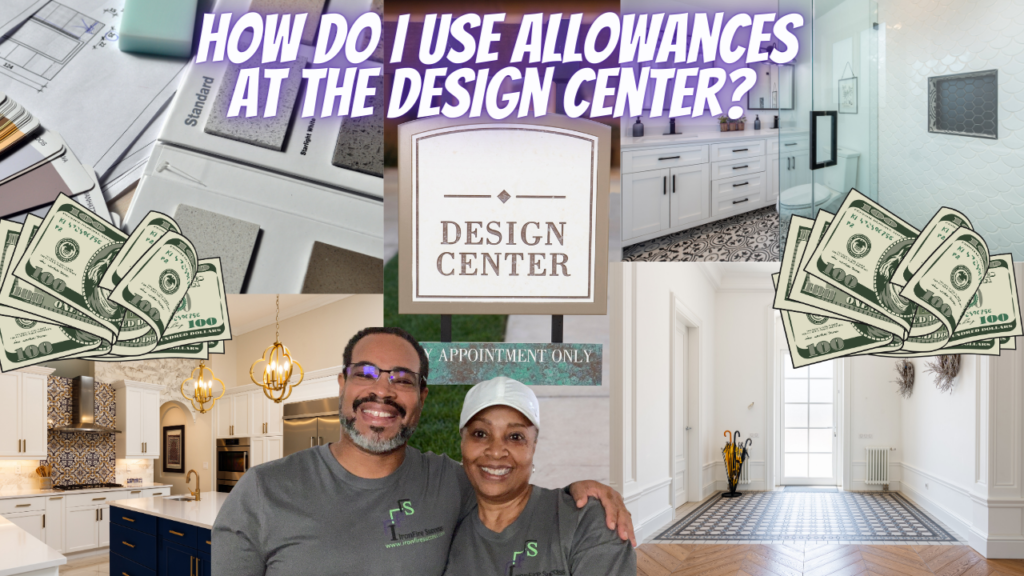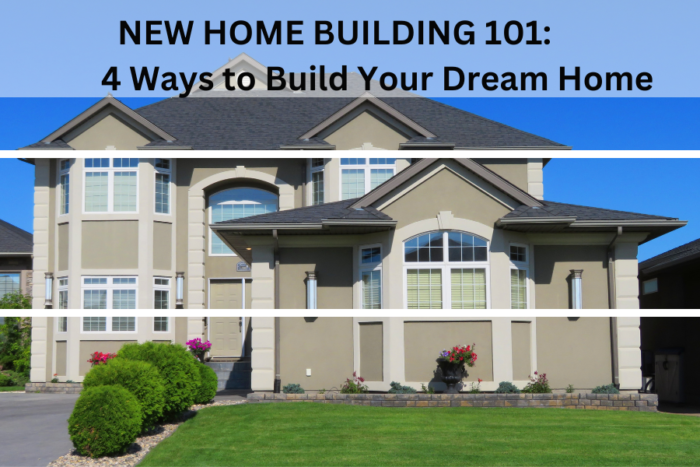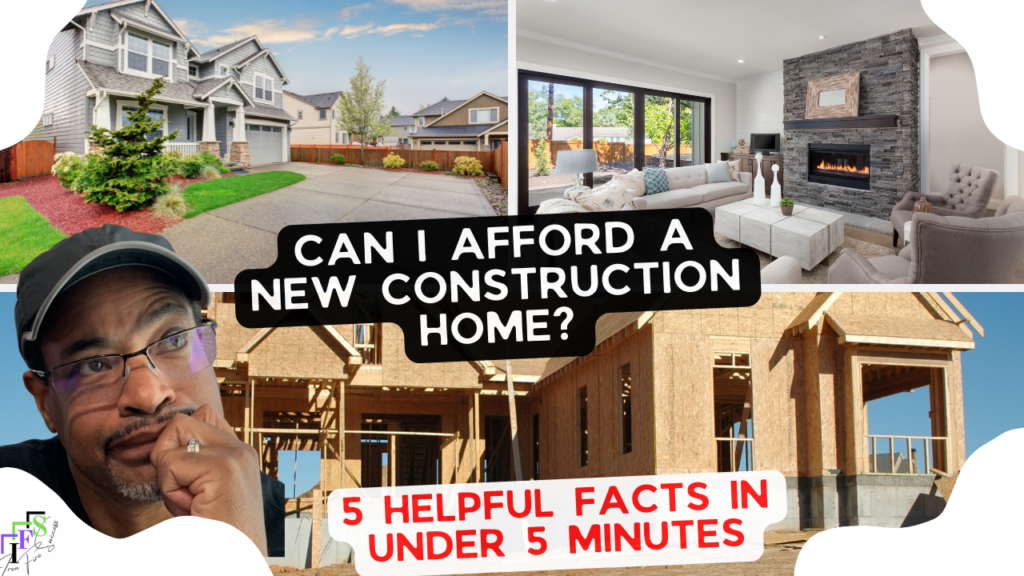Decoding the Design Center: Using Allowances in New Home Construction
If you are building a new home or considering new home construction with a builder that uses allowances, this is the article for you!
Most articles regarding the new home construction process describe one method of making selecting and choosing upgrades at the design center. However, there is more than one way that selections and upgrades are handled by a new construction home builder. See my article 8 Tips to Prepare for the Design Center for more information about the different ways builders do this and how to prepare for the design appointment. During the process of choosing a builder for our new custom home, we learned that most custom home builders use allowances.
I’m going to share what we learned about using allowances, tell you the process our builder uses, and tell you how we used allowances to make selections for our custom home. Please also check out our corresponding YouTube Video!
-
What is an allowance?
An allowance is an amount of money designated in the new home construction contract, that can be used towards a particular element of your new home (appliances, lighting, flooring, fixtures, etc.). This is the amount of money that you can spend on that element, without paying any additional money or upgrade charges.
-
How do you know how much the allowance is?
The allowance amounts are sometimes stated in a builder’s brochure that you get when visiting a model home, or a builder may list the allowance amounts online. In other instances, you will find out when you sit down for a pre-contracting informational meeting. For example, Builder A’s brochure may state that their construction contracts include an $8,000 kitchen appliance allowance and a $7,000 allowance for all plumbing items and fixtures. Builder B’s brochure may not state a dollar amount. Instead, Builder B’s brochure states that the allowance amount is determined per bid amount.
-
What does an allowance based on a bid amount mean?
This means that the builder will send out bids to vendors to ask for a price for certain elements of your home. The builder will use a particular brand and product line of materials that are “included” in the contract, and list those things in the bid. Vendors will respond to the bids and send the builder their price, which will be the amount of the allowance. For example, Builder B’s brochure states that all included appliances will be GE (regular), and will include a cooktop, microwave, double ovens, and dishwasher. The total cost of these items is the amount of the appliance allowance. Builder B states that all fixtures included will be Moen, Brantford, Oil Rubbed Bronze. The total cost of these things is the amount of the fixtures allowance. Our builder used this bidding method for certain allowances for our new construction home.
-
How do you use an allowance to make selections and get upgrades?
Once you know the amount of the allowance, either upfront or after the vendor responds to the builder’s bid, you have some choices to make. You can make selections that fall at or below your allowance amount, in which case you will not need to pay any additional charges. Or you can make selections that are above your allowance amount, and pay the upgrade charges.
-
Am I limited in what I can select?
If you are building a full custom home, you are limited only by your budget (and your borrowing power if you are taking out a construction loan). For example, let’s say both Builder A and Builder B’s appliance allowances are $8,000. You can spend it however you choose. You can spend $4500 on your double ovens, $1000 on a cooktop, $2000 on a dishwasher, and $500 on a microwave. Or you can spend $3500 on your double ovens, $2000 on a cooktop, $1500 on a dishwasher, and $1000 on a microwave. It’s up to you.
-
What if I want certain items that add up to more than the allowance?
This is where the upgrade charges come into play. In our example, if your allowance is $8000 and you want appliances that cost $12,000 total, your builder will charge $4000 to upgrade your appliances. NOTE that your builder may also charge an administrative fee for the transaction. For more information about the financial process involved in new home construction, please see our Financial Roadmap article or Financial Roadmap Video.
-
How will the overage or upgrade costs be handled?
Just as with everything else in new home construction, there is more than one way a builder may handle the upgrade costs.
- In some cases, if you know you may want items that will exceed the total allowance amount, you can add money to your contract upfront. For example, your builder will build your home for $650,000, which includes the $8000 allowance for kitchen appliances. You know you will want $12,000 worth of appliances, so you increase your appliance allowance amount by $4000 to $654,000. Likewise, you know you will want plumbing fixtures that will cost $10,000, so you add $3000 to the plumbing allowance, and now your contract is for $657,000.
- If you don’t want to commit the additional funds only for kitchen appliances, or only for plumbing you might want to add general “just in case” funds that you can apply to any upgrade area. In this instance, you add $30,000 in “discretionary funds” into the contract to cover any overages. In this scenario, your $650,000 contract is for $680,000.
- If you don’t increase your allowances or create a discretionary fund up front, the additional upgrade costs can be added to the overall contract amount as you go along. Or, you can opt to pay out of pocket.
- We did a combo of approaches when building our custom home. We added additional funds into the contract up front, in certain areas where we knew we would go over, and we also created a small discretionary fund.
-
How did we use allowances during our custom home construction?
Our builder predominantly uses the bid process to set the allowance amounts. We also added a small amount of discretionary funds ($10K) in case we went over somewhere. In hindsight, we should have made that discretionary fund larger, like $30K, to cover allowance overages and add things we didn’t think of (like the railing we need to put across our back patio).
-
The Builder’s Bid Process
We knew that our builder was going to use the Whirlpool brand, Gold Line, to bid out prices for our appliances and we knew the included appliances (double ovens, cooktop, dishwasher, microwave, standard cooktop hood). We also knew that the builder’s plumbing bid was based on Moen, Brantford Oil Rubbed Bronze fixtures and accessories, standard height toilets, and stainless-steel sinks.
- We adjusted the allowance amount
Because we knew that we wanted a sliding drawer microwave and an oven hood over the cooktop in a center island – and that these items would cost more than what would be in the bid – we added money for these items in the contract. When the bid came in, we chose appliances we wanted (including a double-drawer dishwasher I’m excited about), while trying to stick as close as possible to the allowance amount. Even though we added money up front, we still went over the allowance by about $1200. We used Discretionary funds to cover this overage. - We also added extra money to the plumbing allowance for comfort height toilets and a silgranite sink, but not for fixtures. Although we knew we would not choose those particular fixtures, we were confident we would find something comparable that fit within the allowance amount. We selected the fixtures we wanted, and only went over our allowance by a few hundred dollars by using $500 allocated for bath accessories for other things. We allocated some of the Discretionary funds to cover this overage.
-
What are the pros and cons of using allowances?
Allowances give you the freedom and flexibility to choose the items you want for your new construction home. You can choose any brand or line of appliances. You can shift funds from items you don’t care as much about and allocate more money towards a particular item you really want. In addition, you can control your upgrade costs. Of course, there are also downsides to using allowances.
It is easy to go over the budget when you can get whatever you want. You can easily double your budget if your builder uses the bidding method based on a product brand that is way below the price point you want. For example, if I wanted a GE Café French Door oven, it would have consumed most of my appliance allowance because my builder based their bids on Whirlpool appliances which cost way less. This is where knowing how your builder sets allowance amounts and factoring that into which builder you choose may cost or save you money later.





